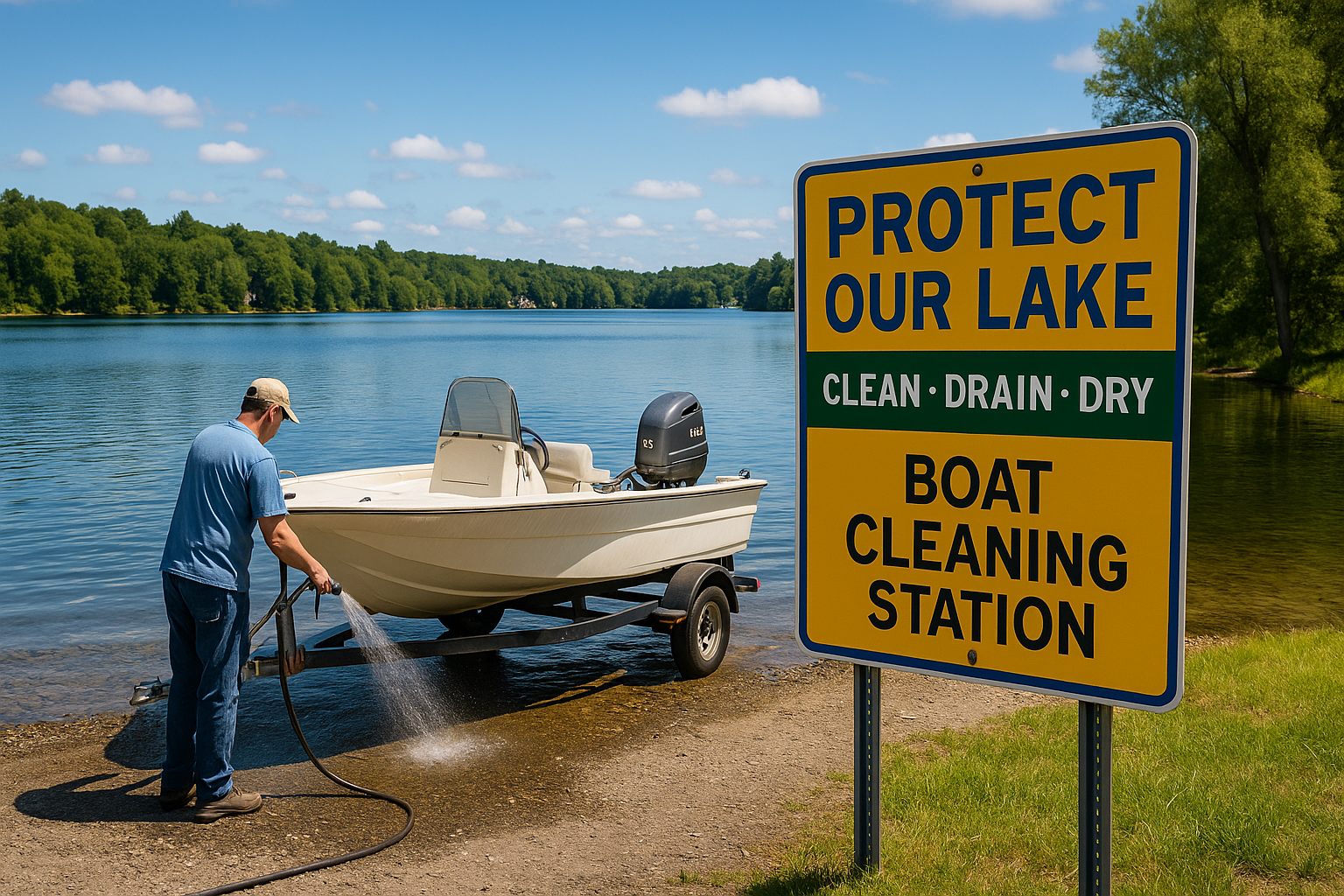How to Prevent the Spread of Harmful Algae

Harmful algae blooms are more than just unpleasant to look at. They can release toxins that harm fish, pets, wildlife, and people. They also hurt local recreation and property values. The good news is that many blooms can be prevented with simple actions we take at home, on the water, and around the lake.
Key Takeaway: Harmful algae blooms can be prevented if the community works together. Cleaning boats, limiting fertilizer, picking up waste, and reporting blooms all help keep Lake Webster healthy and safe for everyone.
What Causes Harmful Algae Blooms
Algae grow naturally in all lakes. The problem starts when nutrient levels rise, especially phosphorus and nitrogen. These nutrients often come from fertilizers, septic systems, pet waste, and yard debris. Warm water, calm conditions, and sunlight then create the perfect setting for a bloom. Once it starts, it spreads fast.
Clean Your Boat and Gear
Boats, trailers, and gear can carry algae from one lake to another. Always wash them before and after launching. Pay attention to the hull, anchor, live wells, and even paddles. Use a hose with high pressure, and let your boat and gear dry for at least 48 hours if you can. A few minutes of cleaning can stop weeks of algae growth elsewhere.
Be Careful With Fertilizer
Fertilizer from lawns and gardens is one of the main nutrient sources for algae. After a rain, excess fertilizer washes into storm drains and ends up in the lake. Choose phosphorus-free fertilizer, apply only what’s needed, and never fertilize before heavy rain. Better yet, use native plants and shrubs that don’t need much fertilizer at all.
Maintain Septic Systems
Failing septic systems release untreated waste into groundwater, which can feed algae blooms. If you own property near the lake, have your system inspected and pumped regularly. Fix leaks early. A well-maintained system protects both your home and the lake.
Pick Up After Pets
Pet waste adds nutrients that algae thrive on. Always carry bags, and dispose of waste in the trash. It may not seem like much, but one dog can produce hundreds of pounds of waste per year. That adds up quickly around a lake community.
Keep Yard Waste Out of the Water
Leaves, grass clippings, and brush break down into nutrients when dumped near or in the lake. Compost them or take them to a local collection site instead. Even small piles along the shoreline can fuel algae blooms once rain pushes them into the water.
Reduce Stormwater Runoff
Driveways, roofs, and patios send rain straight into the lake. Adding rain barrels, rain gardens, or permeable pavers helps soak up water before it reaches the shoreline. Less runoff means fewer nutrients reaching the water.
Report Suspected Blooms
If you see green mats, thick scum, or water that smells bad, report it. Contact the local conservation office or state environmental agency. The sooner a bloom is tested, the faster action can be taken to warn swimmers and protect wildlife.
Community Effort Matters
No single action will stop algae, but together they make a difference. Every clean boat, every bag of pet waste, and every careful fertilizer choice adds up to a healthier lake. Protecting Lake Webster is a community effort, and everyone plays a part.
Harmful Algae: Quick Answers
Share this with neighbors and guests. Healthy habits protect Lake Webster.
